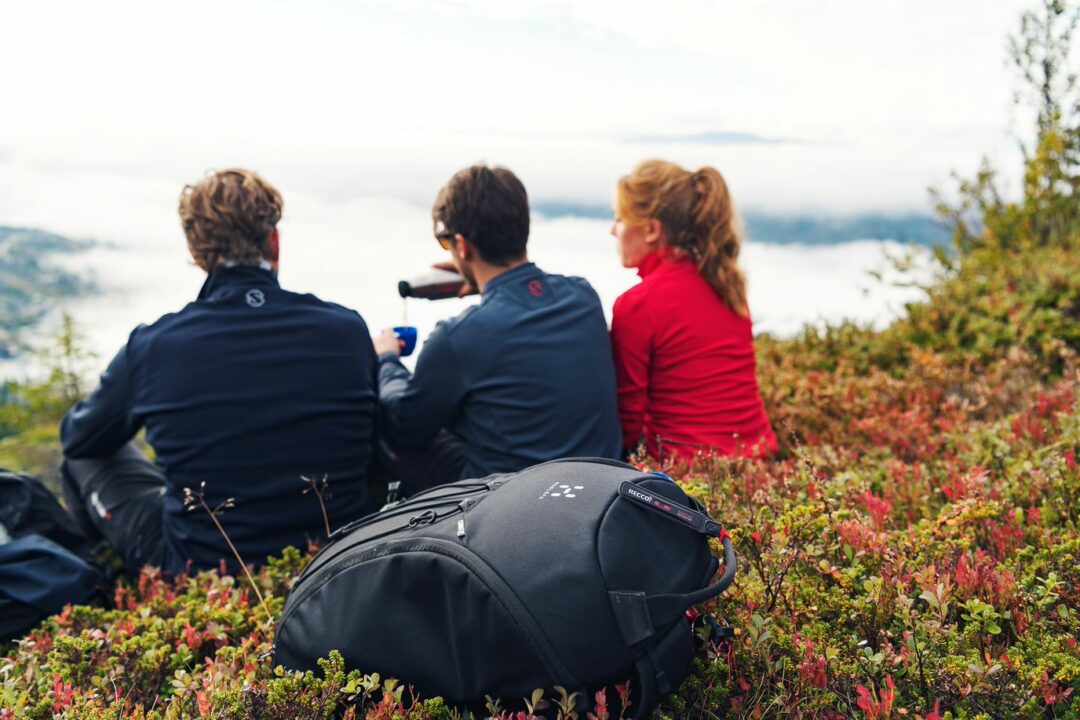How to prevent and treat foot blisters
Outdoor Activities | March 28, 2024
SAIL
June 16, 2023

Whether you’re into backcountry skiing, hiking, mountain biking or other any other outdoor activity, the RECCO technology could one day save your life! Thanks to a passive reflector system found in many clothing and equipment from top outdoor brands, rescuers are able to effectively locate people buried by avalanches or lost deep in the woods.
In this article, you will learn everything you need to know about RECCO technology:
It all began in 1973, when the Sweden-born Magnus Granhed lost a skier friend in a fatal avalanche. He then decided to work with a team of researchers on a portable reflector system that could be detected by radar, even several metres beneath the snow. It took nearly ten years to perfect the RECCO technology and eventually create a marketable system. In 1987, the Swiss rescue team Air Zermatt was the very first to use the patented RECCO technology to successfully locate and rescue an avalanche victim from a helicopter.
Since then, RECCO’s research and development team has put a consistent effort into further improving its detector system. The reflector has become very effective, and a scaled-down version can now be found in a wide range of clothing and equipment from 150 outdoor brands, including Helly Hansen, Marmot, Mountain Hardwear and Spyder.
The RECCO reflector appears as a raised strip no bigger than a paper clip. It is integrated into items like backpacks, ski boots and pants, helmets, jackets and outdoor pants. If something goes wrong, it enables rescuers to locate you without any action on your part. How does it work? A compatible RECCO detector emits a directional radar signal, similar to the beam of a flashlight. When this radar signal hits the RECCO reflector, it is sent back to the detector, thus guiding rescuers in the direction of the victim. The closer the detector gets to the reflector, the stronger the signal returned, ultimately leading the rescuers to the victim’s location.
RECCO reflectors are passive transponders, which means they require no batteries or activation to operate. If they remain undamaged, they will have an unlimited lifespan.
It’s also worth knowing that carrying several reflectors with you (in a helmet, coat and backpack, for example) increases your chances of being found in the event of an avalanche.
Check out our article on how to properly prepare and equip yourself for a long winter hike to get ready for your winter adventures.
The handheld detector, used exclusively by rescue teams, can locate RECCO reflectors within a range of up to 80 metres in the air and 20 metres in the snow. It is used worldwide (by 900 ski resorts and rescue teams in 32 countries) as an additional electronic search method in avalanche rescue operations. The current version of the handheld detector weighs just 1 kg, or just over 2 lbs.
The RECCO SAR (search and rescue) helicopter detector allows for rapid coverage of large search areas. Under normal conditions, it can search from a height of 100 metres and cover a 100-metre-wide area at a speed of around 100 km/h. This enables rescuers to search 1 km² in around 6 minutes. When locating a victim, the RECCO SAR detector works in the same way as the handheld detector. The detector sends out a radar signal which is echoed back by the RECCO reflector. This returned signal then enables the rescuer to locate a victim or a person who got lost.
Quebec-based Helico Secours is the fourth rescue organization in Canada to use RECCO SAR technology. In fact, for every RECCO reflector purchased, five dollars is donated to Helico Secours to support search operation costs in the Eastern Canada.
Every second counts in an avalanche rescue operation. This is why anything that can help in the search for victims is worth using. RECCO technology makes an excellent complement to an avalanche beacon system. However, it cannot replace it, and you should always carry an avalanche transceiver, a probe and a shovel when venturing into avalanche terrain or heading to backcountry areas for skiing, hiking, snowshoeing or snowmobiling.
Skiing is not the only outdoor activity presenting risks. Setting off on a multi-day hike away from civilization, venturing out on less travelled mountain bike trails, or climbing, paddling and exploring the backcountry always involves a certain amount of danger – from the risk of injury in remote areas to getting lost or falling victim to severe weather conditions, for instance. This is why RECCO reflector technology is added to so many outdoor items. The RECCO SAR helicopter detector is often used in summer as it allows coverage of large natural areas.
If your outdoor gear is equipped with RECCO reflectors, it is essential to tell the people around you so that they can immediately pass on the information to rescue teams if something happens.